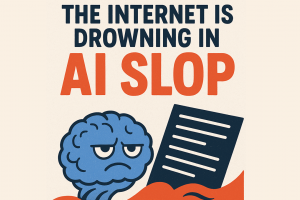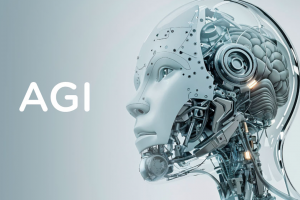Cloud-native AI is transforming machine learning, turning once-exclusive workflows into scalable, accessible ecosystems. With platforms like AWS, Google Cloud, and Azure, startups and individuals now enjoy the same infrastructure once reserved for billion-dollar enterprises. From AutoML to serverless pipelines, the cloud is democratizing innovation, accelerating development, and sparking breakthroughs across industries. The future of AI is no longer locked inside research labs—it’s unfolding in the cloud, open for anyone with vision and courage to build.
"AI is no longer locked inside research labs or billion-dollar enterprises—it’s now being forged in the cloud, reshaping how businesses, startups, and even individual developers build the future."
Imagine a world where a single developer in a coffee shop can access the same machine learning infrastructure as Google or Microsoft. That world isn’t science fiction—it’s happening right now. The rise of cloud-native AI is breaking down walls, democratizing access to machine learning, and redefining how innovation scales.
🌐 The Cloud-Native AI Revolution: A Shift in Power
In the past, machine learning was expensive and exclusive. Only large corporations with massive on-premise infrastructure could train complex models. Training something as advanced as GPT or BERT required supercomputers, specialized GPUs, and months of engineering effort.
Today, cloud providers have flipped the script. Platforms like AWS SageMaker, Google Vertex AI, and Microsoft Azure AI are delivering end-to-end solutions that allow companies of all sizes to build, train, and deploy models at scale. No data center? No problem. With pay-as-you-go infrastructure, the barriers to entry have fallen.
This isn’t just a convenience upgrade. It’s a fundamental shift in how workflows are designed: from experimentation to deployment, every step is faster, cheaper, and more collaborative.
📊 The Data Behind the Change
Let’s ground this in reality:
-
87% of enterprises already leverage cloud infrastructure for at least one AI initiative (source: Gartner).
-
The global cloud AI market is projected to hit $274 billion by 2032 (Allied Market Research).
-
Startups adopting cloud-native ML workflows report up to 40% faster time-to-market compared to traditional on-premise setups.
These numbers highlight not just adoption, but acceleration. Cloud-native AI isn’t just growing—it’s compounding.
🔄 From Static to Dynamic: Why Cloud-Native Matters
Traditional AI workflows looked like this:
-
Collect data.
-
Clean and preprocess.
-
Train models in-house.
-
Deploy with complex infrastructure.
Cloud-native AI changes the equation:
-
Serverless data pipelines automate collection and cleaning.
-
Pre-trained models (via Hugging Face on AWS or OpenAI integrations) cut development time in half.
-
AutoML tools democratize training—no PhD required.
-
Continuous deployment on Kubernetes means models update in real-time.
This creates living AI ecosystems where workflows adapt on the fly, mirroring the fluid nature of data in the real world.
🌍 Democratization: AI for Everyone
Here’s the most inspiring part: cloud-native AI isn’t just for Silicon Valley giants. It’s empowering:
-
Healthcare startups can use cloud-based ML models to detect diseases earlier, without building multimillion-dollar infrastructure.
-
Small e-commerce brands can plug into recommendation engines on demand, competing with Amazon on personalization.
-
Independent developers can experiment with generative AI by accessing GPUs in the cloud for a few dollars an hour.
This leveling of the playing field is sparking a wave of innovation from places we least expect. AI breakthroughs are no longer confined to elite institutions—they’re bubbling up from small labs, local startups, even individuals with bold ideas.
🔥 Why This Matters to You
Ask yourself: What could you build if the tools of the world’s biggest tech companies were in your hands?
That’s the reality cloud-native AI offers. Whether you dream of launching a startup, automating your career, or building the next viral AI app, the infrastructure is already waiting for you.
We’re living in a rare moment where technology and accessibility intersect. Cloud-native AI is not just about efficiency—it’s about opportunity, and it’s rewriting the story of innovation.
🚧 Challenges Ahead (Because no revolution is perfect)
Of course, the rise of cloud-native AI isn’t without its pitfalls:
-
Data security concerns: Who owns your data when it lives in the cloud?
-
Vendor lock-in: Moving away from a single provider can be complex and costly.
-
Cost management: Pay-as-you-go is powerful, but without monitoring, expenses can spiral quickly.
Yet, these are growing pains of any transformative shift. Just as cloud computing overcame skepticism in the 2010s, cloud-native AI will refine itself through competition and innovation.
🌟 The Future of AI Workflows
In the next 5 years, expect:
-
More collaboration between providers and open-source communities (think Hugging Face + AWS).
-
Serverless AI becoming the default, making infrastructure invisible.
-
AI marketplaces, where businesses buy and sell trained models like apps.
-
Edge + Cloud synergy, blending on-device intelligence with cloud scalability.
The biggest winners won’t just be cloud providers—they’ll be you, the creators, innovators, and builders who harness this ecosystem.
✨ Final Takeaway
Cloud-native AI isn’t just a technology trend—it’s a movement. It’s about tearing down walls, empowering creators, and making machine learning accessible, scalable, and unstoppable.
The only question left is: Will you watch this revolution from the sidelines, or will you step in and build the future?

























